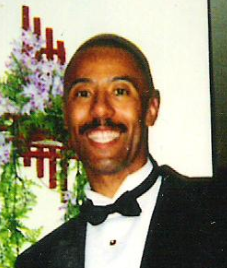Yukio Mishima’s, “The Sound of Waves” is a book that captures and engages the active reader on a number of levels. Active reading is important, because unless you share the cultural background of the author, you will miss out on the complexity and depth of the story. First things first, however. The author was nominated for the Nobel Prize for Literature on three separate occasions, and there are those who believe he should have been awarded the prize. Judging by his body of work as compared to some of the past winners, Mr. Mishima would have been a more than worthy recipient. Yukio Mishima, as a writer, is a master of his craft. After publishing his first book at the age of 16 (no mean feat in Japan), he went on to write forty novels, plays, and hundreds of short stories and essays. Prolific, I think, is the word that was invented to describe this author’s literary production.
In this truly timeless story of first love, Mishima uses evocative language to paint pictures in the mind of the reader. We hear the sound of the waves, we see the ocean, we feel the rain, the storms, the typhoon even. We hear the laughter, the joys, the tears, the pain, the hopes and fears of the characters involved in the story. We understand the way the plot develops as it does, with jealousy playing a major role in the story. That’s human, to feel jealousy when someone else is happy, when someone else has got something you wanted, but you did not manage to get for yourself.
The parents are portrayed realistically, willing to go to great lengths to satisfy their own dreams, to sacrifice to raise a family alone. The parents of Shinji and Hatsue, as well as the other children of the island, are easy to relate to. They want the best for their children. Their motivations are universal.
Culturally, a society in which nature and ancestors are venerated is made understandable to the reader. Shintoism plays a major role in shaping the reactions of Shinji and Hatse to the adversity their love is subjected to. Their actions speak volumes for the traditions and beliefs of the Japanese people. It is with little wonder when we actively search for more information and discover that this book has been made into a movie and filmed on 5 separate occasions in the past 50 years. It’s a classic tale which appeals to a wide audience on each retelling of the story. Again, it is both a timeless love story and a testimony to the values and morality one finds in the Japanese Shinto religion.
Despite all of the numerous islands that Japan has, Mishima set the story on Uta-Jima, a fictitious island. This gave him the ability to construct a remote fishing village island that would not only be contrasted with the modernity found in cities, but also be universally recognizable to the Japanese reader, and at the same time, be familiar to any other reader from outside of the Japanese culture. The result is a familiarity with the isolated setting, and an appreciation of why this island is not more technologically advanced than it appears in the story. After all, we are in the middle of the book before it dawns on us that we are reading a book set in the middle of the 20th century, since the Korean War is mentioned in the story.
Having praised the author extensively for his imagery, descriptive language, storytelling, characterization, capacity to convey Japanese cultural and religious practices, I now point out that he took a calculated risk in resorting to the use of an insect to intervene during an attempted rape. He didn’t pull it off convincingly, in my opinion. It was out of place in a story that was so very realistically written. I’m not opposed to a love story having humourous aspects, but as he used it here, he is asking the reader to suspend disbelief (and laugh) when we would have been more than willing to believe that Hatsue herself had overcome her attacker. Hatsue, after all, is young, in excellent health, strong enough to pull boats up on the beach, and used to hard work. She is also a pearl diver, capable of holding her breath and diving deep into the ocean to wrest pearls from its depths. Her attacker was physically her inferior, and in my mind, she would have easily defeated Yasuo. He would have taken nothing from her except perhaps a lump on his head from the can of WhoopA$$ she would have opened up on him.
Overall, the story is gripping, emotional, and very satisfying. It brought a lump to my throat, choked me up, and yes, I admit that I shed a tear (or two) at multiple times during the reading of this book. As a writer, it’s the kind of book I wish I had written myself, as a teacher it’s the kind of book you want your students to read and discuss. As a human being, it’s the kind of story you wish would happen to everybody, at least once in their lives, namely, to be truly loved in a pure way. I recommend this book very highly to anyone who has ever been in love. The book definitely transcends time and place, and will live on forever through the eternity of the human existence. Well done Mr. Mishima.
































































